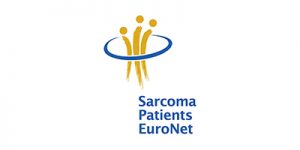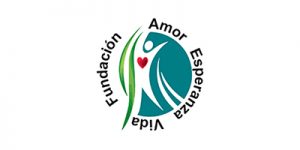TYPES OF SARCOMA
Sarcomas are divided in 3 main subgroups: bone sarcoma, soft-tissue sarcoma (STS) and gastrointestinal stromal sarcomas (GIST).
Bone sarcomas are a subgroup of sarcoma arising from bone. Osteosarcoma, Ewing sarcoma and Chondrosarcoma are the most frequent histologic subtypes.
1. Osteosarcoma
This is the most frequent bone sarcoma and it is characterized by the formation of osteoid, which is the diagnostic hallmark.
Epidemiology and pathogenesis
With an estimation of 2,900 new cases in U.S. during 2012, they represent the third cause of cancer mortality in patients less than 20 years of age. There are two incidence peaks, during adolescence and sixth decade of life (the majority being secondary osteosarcoma). There are more frequent in males, and by site, they mainly arise in limbs (proximal tibia, femur and humerus), being less frequent in axial locations, such as pelvis, spine or cranium.
In adult population, axial and secondary osteosarcomas (to radiotherapy or preexisting diseases such as Paget disease) are more frequent than during adolescence. Elderly patients have a worse prognosis due to several reasons (lower tolerance to aggressive chemotherapy, axial location, more secondary cases …).
Several hereditary syndromes (mainly related with alterations in chromosomal stability or DNA repair mechanisms) confer a higher risk for osteosarcoma development: Mutations in retinoblastoma (Rb), Li-Fraumeni syndrome (mutations TP53), Rothmund-Thomson syndrome (by mutations in helicase gen RECQL4), Bloom syndrome (mutations in BLM).
There are several osteosarcoma subtypes according to grade: low-grade (central and parosteal osteosarcoma), intermediate-grade (periosteal osteosarcoma) and high-grade osteosarcoma (the majority of high-grade osteosarcoma are conventional osteosarcoma).
Principles of therapy
Management of patients affected of osteosarcoma must be done in reference centers, within multidisciplinary teams (MDT’s). Surgery (including metastatic sites if feasible) and polychemotherapy (in high-grade) are the backbones of therapy osteosarcoma.
# Localized disease:
The primary aim of surgery in osteosarcoma must be an en bloc resection with wide negative margins, to achieve an optimal local and distance disease control. At present limb sparing surgery is the preferred technique, which can achieve good functional results without compromising survival. The timing of surgery must be individualized to each patient and nowadays, neoadjuvant chemotherapy followed by surgery is the preferred treatment option.
High-grade osteosarcoma is a systemic disease, and prognosis of osteosarcoma patients has improved in last decades due to the use of chemotherapy, increasing disease-free survival probabilities from only 10%–20% to more than 60%.
Neoadjuvant chemotherapy arose as a consequence of the delay of several months in the manufacturing of the prosthesis. Although differences in outcome have not been proved when compared with adjuvant chemotherapy, there are several advantages favoring chemotherapy in the neoadjuvant setting:
-
- Prompt treatment of micrometastatic disease.
- Higher chances for a limb-sparing surgery.
- Prognostic information related with therapy sensitivity of tumor, based on tumor necrosis on surgical specimen.
There are several cytotoxic drugs active in osteosarcoma: Cisplatin, Adriamycin and High-dose methotrexate (HDMTX) with leucovorin rescue, constitute the standard first-line therapy in osteosarcoma patients. High-dose methotrexate (HDMTX) has to be use with caution in patients over 30 years due to toxicity.
Radiotherapy is not a standard in osteosarcoma, due to its relative radio-resistance but can be a therapeutic tool for unresectable cases.
# Relapsed and metastatic disease:
Timing of recurrence/metastases, number of metastases, and site of metastases are factors to be taken into account in the decision-making process. In case of isolated resectable lung metastasis, surgery should be the first therapeutic choice. A third of patients with complete resection can achieve prolonged survival results.
There are not approved drugs for the treatment of advanced/recurrent osteosarcoma. Ifosfamide and etoposide, gemcitabine combinations and tyrosine-kinase inhibitors, such as sorafenib, have also shown activity in this disease and could be options in the advanced setting.
2. Ewing sarcoma
Ewing sarcoma is a family of entities characterized by an aggressive behavior and a high metastatic potential. Ewing sarcoma can arise from any structure of the body, being diaphysis of long bones (femur, tibia) the most frequent sites. It is a disease typically affecting adolescents, but it can be developed also in children and adult patients.
For it definitive diagnosis, the demonstration of CD99 expression as well as the molecular evidence of EWS gene rearrangements in the adequate clinical and radiological context are necessary.
Its management has to be multimodal (local therapy (surgery +/- radiotherapy) and polychemotherapy based on anthracyclines, alkylating agents, vincristine and etoposide), as in the absent of systemic therapy more than 80% of patients would suffer disease recurrences. With this multimodal therapeutic approach in expert centers, more than 60-65% of patients diagnosed with Ewing sarcoma can be cured.
3. Chondrosarcoma
Chondrosarcoma are chondrogenic neoplasms, characterized by local aggressive behavior, and, in some cases, also metastatic potential. Histologically, the main subtype is the conventional chondrosarcoma (which encompasses Grade I-locally aggressive-, Grade II-III -with metastatic potential, and the dedifferentiated variant, the worst prognosis subtype, with a very aggressive behavior). Other subtypes, as clear cell and mesenchymal chondrosarcoma are very infrequent. Chondrosarcoma can arise in the context of pre-existing benign lesions such as enchondroma and osteochondroma.
Surgery is the mainstay of therapy in resectable cases. Radiotherapy could be a therapeutic option in selected unresectable cases or for symptom control. Systemic therapy is reserved for metastatic/advanced unresectable cases, with the exception of mesenchymal chondrosarcoma in which perioperative chemotherapy could play a role.
This heterogenous group encompasses more than 80 different histologic subtypes, with different biological behaviors, sensitivity to systemic therapy and management. Overall, its incidence is about 4–5/100 000/ year in Europe, being the incidence of each subtype among <1/100000 for those “frequent” STS (liposarcoma, leiomyosarcoma) and less than 1-2/million for the rare STS subtypes.
Patients with suspected STS should be early referred to reference centers, to ensure a multidisciplinary management. Proper imaging studies (both primary tumor- to define size and depth- and systemic staging) have to be ordered. A diagnostic biopsy (mainly core-needle) have to be planned and performed within an expert team (as biopsy tract has to be resected during surgery it is important to perform it within the same team in charge of surgery).
A correct Pathologic diagnosis is key in the therapeutic path of sarcoma patients and has to be done by expert pathologist.
Approximately 80% of cases are diagnosed while they are localized, when cure is the goal.
Surgery is the mainstay of therapy in localized cases. Wide excision with negative margins (with a rim of normal tissue, R0) is the standard surgical approach. In cases with inadequate initial surgery (affected- R1- or insufficient margins) re-excision has to be considered, and in those incomplete (R2) surgeries, reoperation is mandatory whenever feasible. Surgery has to be performed by expert surgeons, specifically trained in sarcoma surgery. Perioperative radiotherapy (neoadjuvant or adjuvant) is indicated for deep, high grade, > 5 cm tumors. Its administration in other cases not fulfilling all the criteria, as well as the timing, have to be discussed and decided in a multidisciplinary setting. Perioperative chemotherapy with 3 cycles of full-dose anthracycline and ifosfamide is not a standard but could be offer to high risk STS patients (high-grade, deep, >5 cm tumors), and its combination with radiotherapy has been shown to be feasible.
Despite an optimal initial management, about one third of STS patients suffer a relapse of disease. In case of adequate initial surgery, local relapses should not exceed 10% of cases. In these cases, surgery is the mainstay of therapy whenever possible. Radiotherapy should be offered to those patients not previously irradiated. In the majority of cases, disease relapses are systemic (metastasis).
In these setting, again, a multidisciplinary management is mandatory, taking into account several factors, such as the metastatic-free interval (MFI), number and location of metastasis, histologic subtype, etc.
In principle, in patients with MFI> 12 months, isolated pulmonary and resectable nodules, surgery should be offered, with the aim of complete (R0) resection of metastasis. Postoperative chemotherapy is not a standard, and in cases in which chemotherapy is suggested, the preoperative setting is preferred, as its activity can be assessed radiologically and in the surgical specimen.
In cases in which surgery is not possible or indicated (short MFI, extrapulmonary disease…), chemotherapy is the standard.
Anthracycline-based regimes have been the backbone in the first line of advanced disease. There is no demonstration of the superiority of multiagent chemotherapy over single agent chemotherapy with doxorubicin alone in terms of overall survival (OS) in advanced disease. However, the combination seems to be superior in terms of volumetric response, and prolonged progression-free survival being a valuable option when tumor shrinkage is needed to palliate symptoms or to facilitate a surgery. Besides anthracyclines and ifosfamide, other cytotoxic drugs have been for a long time used in STS as dacarbazine, gemcitabine and taxanes. In the last decade, trabectedin, pazopanib and eribulin have been emerged in the therapeutic armamentarium, and other new drugs are being evaluated in clinical trials.
GIST is the most frequent sarcoma in the gastrointestinal tract, with an estimated incidence of 1/100000/year. The most frequent site is stomach (50–60% of cases), followed by small bowel (20–30%); other locations such as rectum, esophagus, colon, much less frequent. Diagnosis is bases on morphology, as well as in the demonstration of the proteinic expression by immunohistochemistry of CD117 (KIT) and/or DOG1.
From the molecular point of view, about 85% of cases harbor KIT or PDGFRA mutations. Mutations in SDH, BRAF, NF have also been described is a small proportion of patients.
Mitotic count (measured in 50 high-power fields -HPF-), tumor size and site (gastric GISTs have a better prognosis than small bowel or rectal GISTs) are the main prognostic factors, which are incorporated in the most used risk classification (Armed Forces Institute of Pathology-AFIP-). Tumor rupture is an additional adverse prognostic factor and these patients are conceptually considered metastatic. Mutational status has not been incorporated in any risk classification at present, although some genotypes confer a worse prognosis (such as delections involving codons 557 and/or 558 of exon 11 of KIT) while other genotypes (such as PDGFRA mutations and wild-type GISTs) are associated with a more indolent behavior. In addition, genotype is predictive of response to tyrosine kinase inhibitors, so KIT and PGDFRA mutational analysis should be routinely performed in all GIST patients.
Complete surgery avoiding tumor rupture is the mainstay of therapy for localized disease. In locally advanced cases or when surgery entails important morbidity, neoadjuvant imatinib could be considered for 6-12 months.
After resection, those patients with GIST with high risk for relapse should receive adjuvant imatinib for 3 years, which has shown to prolong disease-free survival and overall survival. At present, the prolongation of adjuvant imatinib up to 5 years is being prospectively assessed in a clinical trial from the Scandinavian Sarcoma Group.
GIST relapses are mainly metastatic, being peritoneum and liver the sites of metastatic disease in the vast majority of cases. Imatinib, sunitinib and regorafenib are the 3 tyrosine-kinase inhibitors approved for the treatment of metastatic GIST.











